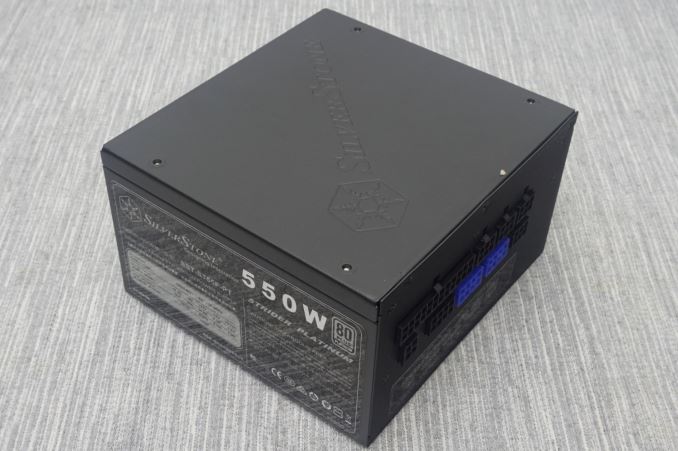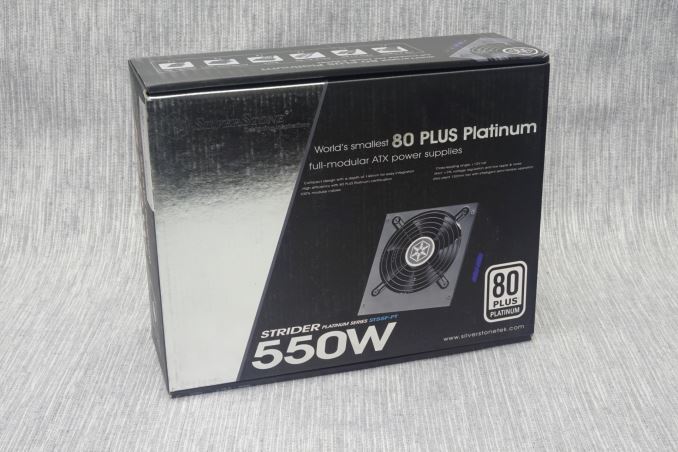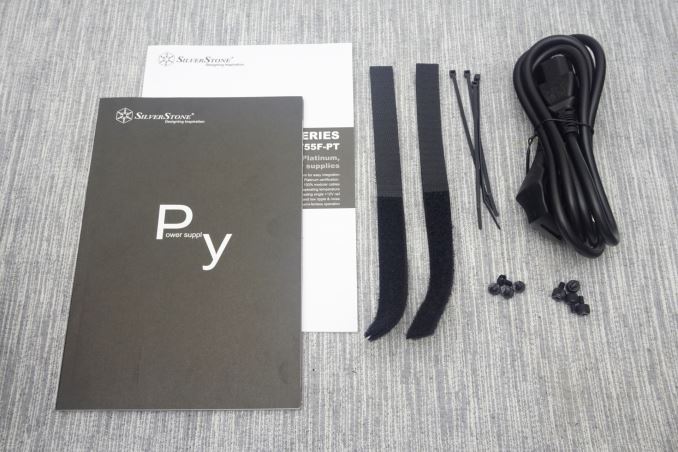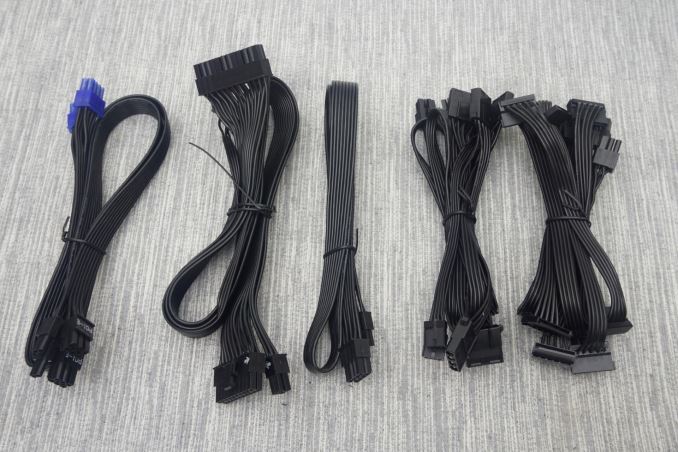The SilverStone Strider Platinum 550W PSU Review
by E. Fylladitakis on April 8, 2016 8:00 AM EST- Posted in
- PSUs
- Cases/Cooling/PSUs
- 550W
- SilverStone
- 80Plus Platinum

SilverStone is a well-known manufacturer of PC cases and PSUs, famed for their obsession with small form factor and proprietary systems. They are one of the very few companies for whom a large portion of their retail products consists of SFX and compact cases, alongside with several proprietary ATX designs, such as the Fortress FT05 that we reviewed a few months ago. Such designs, even though they are frequently made to support ATX PSUs, have limiting PSU compartments and can cause compatibility problems with longer, high output units.
To combat that, SilverStone is focusing most of their PSU designs to be as small as possible, frequently adhering to the ATX standard. Almost every ATX PSU they currently market with a power output under 800 Watts is just 140 mm long. Even the most powerful PSU they currently produce, the Strider Gold S 1500W unit, is only 180 mm long, significantly shorter than other designs of equivalent power output.
Along these lines, today we are having a look at SilverStone's Strider Platinum series. As the name suggests, these are the 80Plus Platinum certified designs that SilverStone currently offers. The series consists of three units sharing the same core platform, all just 140 mm long, with their power outputs ranging from 550 to 750 Watts. A quick look at their specifications reveals numerous interesting features, as well as the fact that these are units whose performance is rated at 40 °C. We put the 550 Watt version of the Strider Platinum to the test and examine its features, performance, and value.
| Power specifications ( Rated @ 40 °C ) | |||||
| AC INPUT | 100 - 240 VAC, 50 - 60 Hz | ||||
| RAIL | +3.3V | +5V | +12V | +5Vsb | -12V |
| MAX OUTPUT | 20A | 20A | 45.9A | 3A | 0.3A |
| 105W | 550W | 15W | 3.6W | ||
| TOTAL | 550W | ||||
Packaging and Bundle
The cardboard packaging of the Strider Platinum is of typical size and sturdy enough to provide protection during transport. Aesthetically, the theme is simplistic and serious, focused mainly around large silvery areas reflecting the “Platinum” topic of the PSU. The main features of the PSU are printed on the front side of the box, while more specific details can be found on its sides and rear.
SilverStone supplies a fairly rich bundle alongside with their Platinum series units. Inside the box we found a standard AC power cable, four black mounting screws and four black thumbscrews, a few cable ties, four long cable straps and a well-written manual.
The modular cables of the Strider Platinum are "flat" type, ribbon cables, including the main 24-pin ATX cable. All of the wires and connectors are black, with the sole exception being the PSU side connectors of the PCI Express cables, which are blue.
| SilverStone Strider Platinum 550W | ||
| Connector type | Hardwired | Modular |
| ATX 24 Pin | - | 1 |
| EPS 4+4 Pin | - | 1 |
| EPS 8 Pin | - | - |
| PCI-E 6+2 Pin | - | 2 |
| PCI-E 8 Pin | - | - |
| SATA | - | 8 |
| Molex | - | 6 |
| Floppy | - | 2 |













27 Comments
View All Comments
ImSpartacus - Friday, April 8, 2016 - link
Always awesome to see a psu review for a psu that I might actually consider.I also like the commentary about the rarity of low wattage platinum power supplies. I hasn't thought about it from that perspective.
close - Friday, April 8, 2016 - link
I guess people with "low power" systems rarely want to invest the extra money in better efficiency at that price level. This bring diminishing returns the smaller the PSU wattage is meaning you pay the same "extra" for the efficiency but get smaller benefits than you would on a 700+W PSU.close - Friday, April 8, 2016 - link
*on the first line it should read "at that power level", not price.ImSpartacus - Friday, April 8, 2016 - link
Yeah, I can definitely understand why that's the case. It's a reasonable perspective.Though, I don't know if I'd consider a 500W pc to be "low wattage." That's realistically all most single gpu gaming rigs ever need.
Murloc - Saturday, April 9, 2016 - link
low wattage as in the difference in efficiency is negligible from a power bill point of view, or actually a minus if you consider higher cost.Daniel Egger - Saturday, April 9, 2016 - link
Where I live you're typically pay 2€ per year per Watt consumed 27/4 (tendency rising). That can add up very quickly; my first home server used a total of 115W sustained, the successor was down to 65W, the next successor was down to 54W initially and then further tweaked down to 40W. That's a hell lot of money saved per year...close - Monday, April 11, 2016 - link
That's exactly what I meant by low wattage. When you have a sub-500W system the savings in economy are rarely recovered via increased efficiency. You need a higher difference from efficiency and to run the system 24/7 to get real benefits. Otherwise you just move the costs from really small installments every month for a few years into a bigger chunk payed at the purchase of the PSU.Namisecond - Monday, April 11, 2016 - link
Actually, you need to look at the efficiency curve. Most power supplies hit their highest efficiency at between 40-75% utilization. Unless you've got a monster gaming rig with dual or more SLI/Crossfire GPUs, you're not going to be in that zone with a 1200-1500W PSU.A single moderate (GTX970/980) GPU system with a quad core processor will probably hit about 300-350W while gaming. About where you want to be with a 500-600W PSU.
random2 - Wednesday, April 20, 2016 - link
Wattage aint everything. Many cheaper PSUs don't have the amps on the 12 volt rail necessary to push major GPUs.random2 - Wednesday, April 20, 2016 - link
Not to mention the 46 amps on the 12v rail. :)